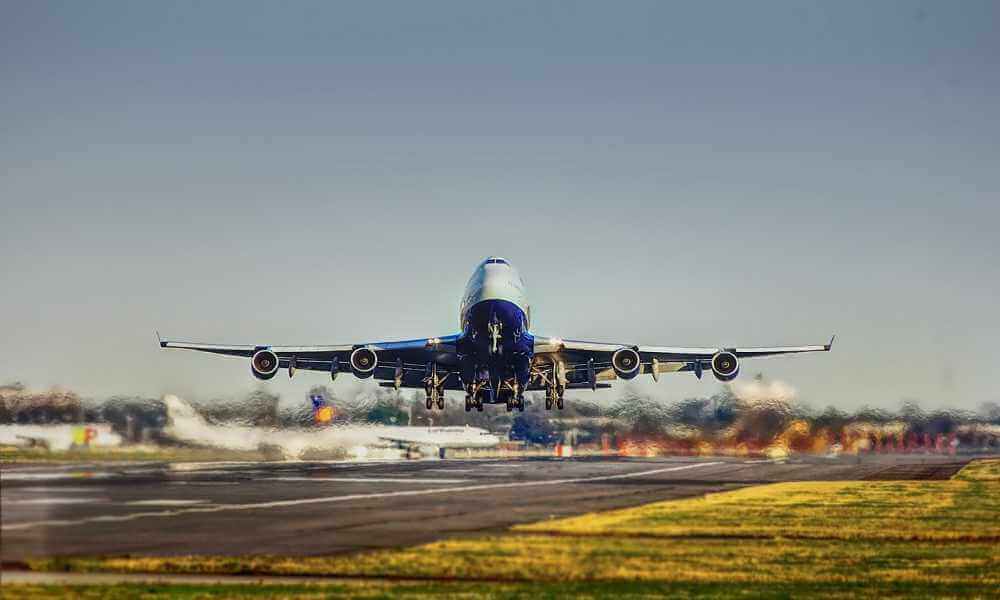The International Civil Aviation Organization (ICAO) is a specialized agency of the United Nations (UN), established by States in 1944 to manage the administration and governance of the Convention on International Civil Aviation (Chicago Convention). It was established in order to codify the principles and techniques of international air navigation. ICAO also aims at fostering the planning and development of international air transport to ensure safe and orderly growth.

Headquartered in Montreal, Quebec, Canada, ICAO was created with a vision to ‘achieve the sustainable growth of the global civil aviation system’. ICAO’s primary mission is ‘to serve as the global forum of States for international civil aviation’.
Further, ICAO also develops policies and Standards, undertakes compliance audits, performs studies and analyses, provides assistance and builds aviation capacity through many other activities and the cooperation of its Member States and stakeholders’. Presently, there are 191 ICAO members, consisting of 190 of the 193 UN members.
1. History and Origin
Formerly established as International Commission for Air Navigation (ICAN), which was established in the year 1903, ICAN continued to function until the year 1945. In the year 1944, Convention on International Civil Aviation was held in Chicago in which 54 countries signed and agreed to establish Provisional International Civil Aviation Organization (PICAO). As per the agreement PICAO began operating on 6 June 1945, replacing ICAN. In the 1947, ICAO became a permanent agency of the United Nation.
2. Role of ICAO
ICAO plays a crucial role in aviation industry by supporting and enabling a ‘global air transport network that meets or surpasses the social and economic development and broader connectivity needs of global businesses and passengers’xii. Keeping this broad aim ICAO has laid down the following objectives that guide the functions of ICAO.
- Safety: ICAO’s primary role in aviation industry is to enhance global civil aviation safety by effectively implementing the Global Aviation Safety Plan (GASP).
- Air Navigation Capacity and Efficiency: ICAO, in order to increase the capacity and improve the efficiency of the global civil aviation system, strives to promote upgrading the air navigation and aerodrome infrastructure and developing new procedures to optimize aviation system performance worldwide.
- Security & Facilitation: ICAO functions to enhance aviation security, facilitation and other matters related border security.
- Economic Development of Air Transport: ICAO plays an important role in fostering the development of a sound and economically-viable civil aviation system by ‘harmonizing the air transport framework focused on economic policies and supporting activities.
- Environmental Protection: ICAO seeks to minimize the adverse environmental effects of civil aviation activities by implementing policies and regulations for the aviation industry that are ‘consistent with the ICAO and UN system environmental protection policies and practices’xiv.
The other objectives include:
- To foster the implementation of ICAO Standards and Recommended Practices (SARPs) to the greatest extent possible worldwide.
- To develop and adopt new or amended SARPS and associated documents in a timely manner to meet changing needs.
- To strengthen the legal framework governing international civil aviation.
- To ensure the currency, coordination and implementation of regional air navigation plans and provides the framework for the efficient implementation of new air navigation systems and services.
- To respond on a timely basis to major challenges to the safe, secure and efficient development and operation of civil aviation.
- To ensure that the information and guidelines on the economic regulation of international air transport is updated and useful to the members.
- To assist in the process of mobilization of human, technical and financial resources for civil aviation facilities and services to foster greater growth.
- To ensure the greatest possible efficiency and effectiveness in the operations of the Organization in order to meet the above objectives.

3. Membership
Membership of ICAO is open to virtually every country in the world. As of March 2016, ICAO members had 191 members, consisting of 190 of the 193 UN members.
International Civil Aviation Organization (ICAO)
4. Organization Structure of ICAO
i. The Assembly
The organization structure of ICAO comprises of two important organs namely, ICAO has The Assembly – sovereign body and a governing body – The Council. The Assembly comprised of all Member States of ICAO and meets at least once in every three years and is convened by the Council. The assembly has various powers such as
- To elect the Member States to be represented on the Council;
- To examine and take appropriate action on the reports of the Council and decide any matter reported to it by the Council; and
- To approve the budgets of the Organizationxv.
ii. The Council
The council of ICAO, on the other hand, is a permanent body responsible to the Assembly and is composed of 36 Contracting States elected by the Assembly for a three-year term. The council is headed by a Council President who is appointed for a three year term. The council has numerous functions. Notable among them are,
- to submit annual reports to the Assembly;
- to carry out the directions of the Assembly; and discharge the duties and obligations which are laid on it by the Convention on International Civil Aviation (Chicago, 1944).
- To administers the finances of ICAO;
- To appoint and define the duties of the Air Transport Committee, as well as the Committee on Joint Support of Air Navigation Services, the Finance Committee, the Committee on Unlawful Interference, the Technical Cooperation Committee and the Human Resources Committee.
- to appoint the Members of the Air Navigation Commission and it elects the members of the Edward Warner Award Committee.
Below is the list of countries/ states that were selected from among ICAO’s 191 Member States to the ICAO’s 36 Member Governing Council for the year 2016-2019.
- PART I – Countries of chief importance in air transport
Australia, Brazil, Canada, China, France, Germany, Italy, Japan, Russian Federation, United Kingdom and the United States.
- PART II – Countries which make the largest contribution to the provision of facilities for international civil air navigation
Argentina, Colombia, Egypt, India, Ireland, Mexico, Nigeria, Saudi Arabia, Singapore, South Africa, Spain and Sweden.
- PART III – Countries s ensuring geographic representation
Algeria, Cabo Verde, Congo, Cuba, Ecuador, Kenya, Malaysia, Panama, Republic of Korea, Turkey, United Arab Emirates, United Republic of Tanzania, and Uruguayxvii.
One of the very important duties of the Council is to adopt International Standards and Recommended Practices (SARPs) and to incorporate these as Annexes to the Convention on International Civil Aviation.
iii. The Air Navigation Commission
The Air Navigation Commission (ANC) is composed of nineteen member countries that are selected on the basis of suitable qualifications and experience in the science and practice of aeronautics, as directed by the Convention on International Civil Aviation (Chicago Convention). The Commission’s role is to consider and recommend Standards and Recommended Practices (SARPs) and Procedures for Air Navigation Services (PANS) for adoption or approval by the ICAO Council.
iv. The Secretary
The Secretariat of the International Civil Aviation Organization (ICAO) is headed by the Secretary General who is appointed for a three year term. The Secretariat consists of five bureaus:
- the Air Navigation Bureau,
- the Air Transport Bureau,
- the Technical Co-operation Bureau, iv. the Legal Affairs and External Relations Bureau, and
v. The Bureau of Administration and Services.

5. Importance of ICAO in Civil Aviation
Below discussed are the areas of ICAOs functions that make ICAO an important organization in the Aviation Industry.
- ICAO ensures the safe and orderly growth of international civil aviation throughout the world.
- It promotes the safety of flights in international air navigation.
- It aims at the establishment of International Standards, Recommended Practices and Procedures covering licensing of personnel, rules of the air, aircraft operations, airworthiness, aeronautical telecommunications, air traffic services, accident investigation, aircraft noise and emission levels, security and safe transport of dangerous goods. After a standard is formally adopted, each of the ICAO ‘contracting states’ implements it within their territories.
- ICAO has actively strived to develop a satellite-based system concept to meet future communications, navigation surveillance/air traffic management (CNS/ATM) needs of civil aviation.
- For the purposes of the ICAO, the globe is divided into 9 geographical regions which are treated individually for ‘planning the provision of air navigation facilities and services required on the ground’. ICAO regional meetings are held periodically.
- ICAO aims to reduce the procedural formalities globally which may add extra time to passengers’ journey and the provision of adequate air terminal buildings.



